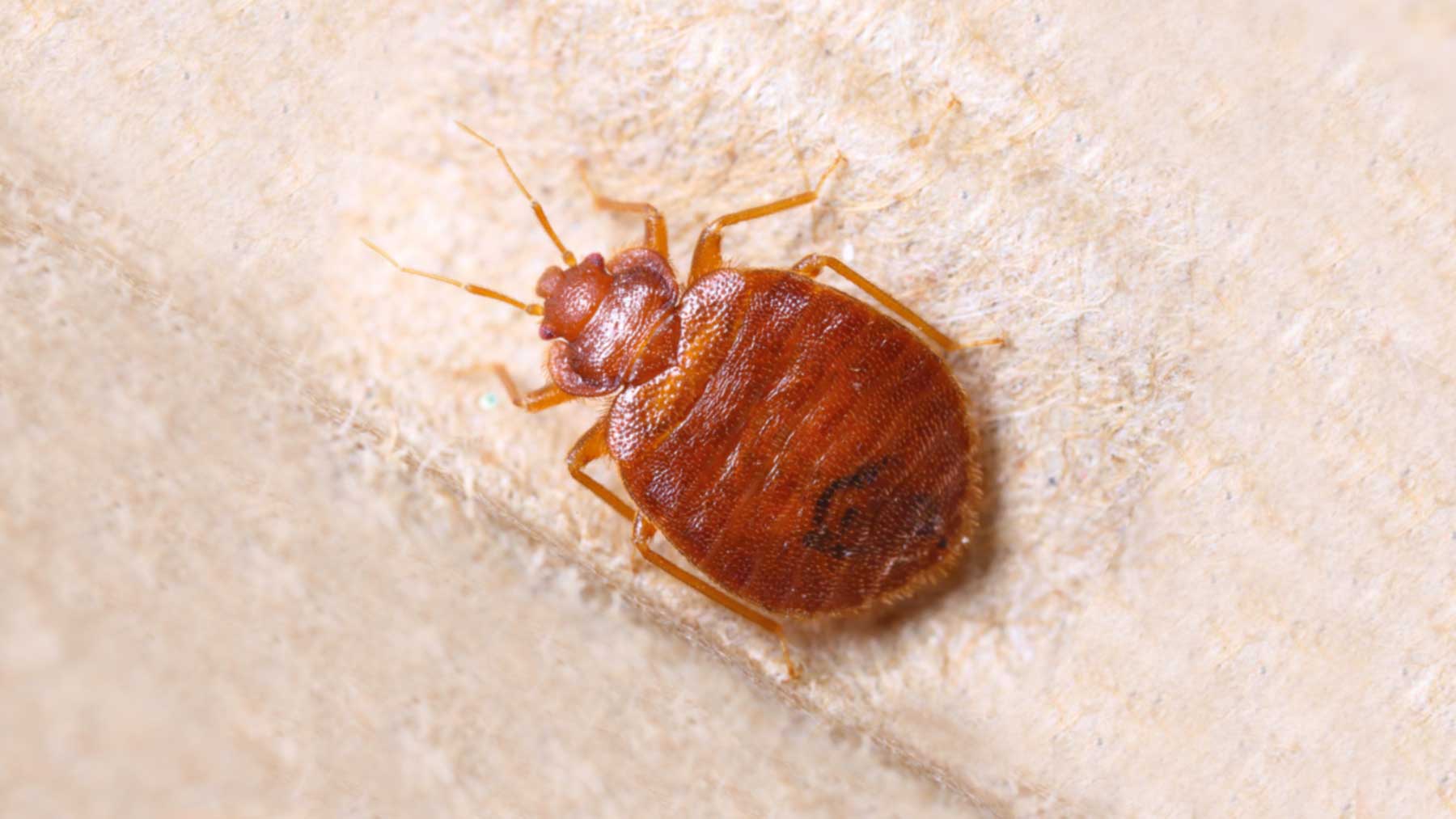What are bedbugs?
Cimex lectularius, the name academics use for the common bedbug, is a creeping insect from the family of bedbugs. It is considered a haematophagous (blood-sucking) ectoparasite, i.e. this parasite lives on the outer surface, e.g. the skin of its host and feeds itself by a bite of the host’s blood. It is not just birds and mammals that fall victim to the bites of the bug in search of food, humans do too. While animals act as a secondary host, humans are considered as the main host for the bloodsucker.
Depending on environmental conditions such as temperature, food, etc. the life of the parasite is between 6 and 18 months max. wherein it can also survive for several months without food. In a phase without feeding, the Cimex lectularius doesn’t lay any eggs.

The bedbug
(lat.: Cimex lectularius)
How do bedbugs multiply?
A female bed bug lays between 200 and 500 eggs within its life cycle. On average, several eggs are laid per day, and about 15 to 25 eggs per week. After mating and/or fertilisation of the eggs, the eggs are deposited in less than 24 hours. As a rule, the fertilised eggs are deposited in the usual hiding places of the bed bug, such as cracks and joints. In ideal environmental conditions (22 °C room temperature, not less than 13 °C, not more than 36 °C), the larvae hatch after 2 weeks and develop to a mature specimen in another 8 weeks, which then multiplies again.
The development into the adult insect happens over 5 stages. In each case the larva needs a blood meal in order to reach the next development stage.
10 facts about bedbugs
Bedbugs “eat” several courses
When it comes to food intake, bedbugs follow a similar system to humans: A starter, main course, dessert. After biting at one point, they move and bite elsewhere. Therefore, as a rule, bedbug bites occur in a line: The so-called bug line.
Bedbugs are not a sign of poor hygiene
Bedbugs do not inhabit a room because it is not clean enough. In accommodation, they are also not a sign of unhygienic conditions or a lack of cleaning. Bedbugs do not care how dirty or clean their environment is. What counts for the parasite is a nearby host (source of food).
Bedbugs do not like heat
Otherwise robust, the pest hates heat. At every stage of life, bedbugs avoid heat that goes beyond the body heat of the human being. This is because the protein in the parasite solidifies in the heat, which bedbugs do not survive. That’s what makes our Thermo-bug® method so effective.
Bedbugs adapt to poisons
Previously, the pests were combated with insecticides. That was also very successful. Over time, however, insects have begun to develop resistance to these poisons and in part, they can survive them. Therefore, heat is the only method to successfully fight the parasite. This is because they can not develop resistance against heat.
Bedbugs fast for up to 5 months
Under favourable conditions, bed bugs can survive up to 5 months without any intake of food. Under certain low temperature conditions, the robust bugs can even last up to 400 days. That’s more than a year.
Bedbugs are harmless
It hasn’t been proven that bedbugs transmit diseases. Even if bed bugs bite a sick person and then a healthy person, there is no health risk to worry about. The way in which bedbugs can still affect your well-being, is something we explain in our FAQ.
Bed bugs are visible to the naked eye
They are very small, but fortunately, they are big enough that we can see them with the naked eye. The pests are about 4 — 8 mm in size and almost transparent. If they have eaten, they turn pale yellow, light brown or dark brown, with the back of the body becoming increasingly black. In this section, we will explain exactly how you can recognise bed bugs.
Bedbugs lay a lot of eggs
Under favourable conditions, bedbugs multiply at an explosive rate. When fed, a single female bedbug can lay up to 500 eggs in her life cycle. Usually, however, there are many bedbug females that plague you, and then in turn, the newly hatched bugs lay eggs, and so on.
Bedbugs hide very well
Bedbugs inhabit everywhere that is a hiding place: Cracks, gaps, holes, … If they are not eating, they are hiding. Although they can find places to hide in a plague of bedbugs, it is very difficult for inexperienced people to find all the hiding places. Therefore, you should definitely contact a specialist if you discover bedbugs.
Bedbugs are happy to travel
More or less of their own free will, bedbugs travel a lot. They hide in the luggage of hotel guests, handbags or furniture and travel from one place to another as an unseen passenger. As such, they go unnoticed in apartments and onto new hosts.


